It’s one of the biggest buzzwords in food and drink. So what is blockchain technology? How does it work?
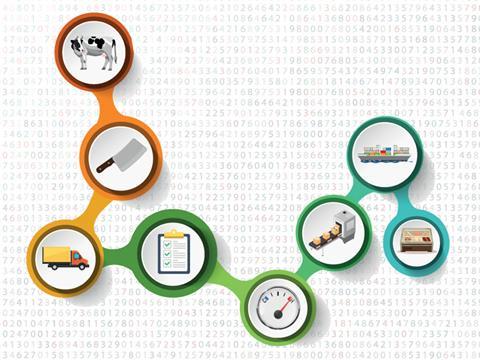
You know what blockchain is, right? Everyone’s talking about it. It’s the biggest thing to happen in food and drink for years. It’s going to revolutionise the way the entire industry does business. So what’s it all about?
If you understand how Bitcoin works, you’ll already know. If, like 99% of the world, you could no sooner explain how Bitcoin works than you could build a computer from scratch, it’s a bit complicated.
Plenty of people have tried to explain how blockchain works. Many do so by relating it to things we all use everyday, like Bitcoin, eBay, Amazon, or switching Word for Google Docs. Essentially, blockchain technology promises to provide transparency into who promised to do exactly what, when, and how.
So, with eBay you might decide to splash the cash on a second hand Gucci top because it’s very easy to read reviews and star ratings that previous customers have left about the seller. It’s independent and objective verification that the absolute random you are buying the Gucci from is trustworthy.
It’s the same with third party sellers on Amazon. Google Docs comes into it because multiple people on all corners of the globe can work on a single Google Doc, updating it in real time, providing a true snapshot of the situation as it stands, rather than several people working on a single Word document in different locations then emailing them to each other in a blur of missed emails and tracked changes.
’It’s a truth machine for authentication, identification, traceability, efficiency and sustainable sourcing’
In the same way, by using blockchain technology, multiple businessess from all corners of the globe can work on a single set of technical food-related industry documents, like temperature or provenance checks for a shipment of Aberdeen Angus beef, and whenever one of those digital documents is updated and saved by someone at a port, abattoir or supermarket (one document represents a piece of the ‘chain’) it is up to date, cross-checked and verified.
You can trust it because it’s not a smudgy docket from one of a dozen clipboards in a dingy warehouse on the other side of the world that you can’t get hold of. It’s all on record, which could minimise petty disputes. And when the chain hits a certain volume of documentation, and for documentation read ‘data’, it is automatically backed up. Once you get more than one voluminous chunk of data, it downloads into a permanently secure ‘block’. Hence, the name ‘blockchain’. Every tick, check or balance that ever happened along the winding supply chain, from farm to fork, is stored forever.
What blockchain promises is visibilty, transparency and trust across the entire supply chain, whoever you are importing from, or whoever you are exporting to. And without mentioning horses, trust has never been more important in the world of food and drink. So how is fmcg using blockchain in practice? And is it all it’s cracked up to be?
Exact origin
Before blockchain, “tracking the organic origin of food in some countries was like finding a needle in a haystack” says tech pioneer and data scientist at Deep Science Ventures, Inma Martinez. “Furthermore, consumers increasingly demand to know the conditions of workers in the fields and at present there is no easy, accurate or efficient way for manufacturers to know about issues like slave labour, local pollution levels or the exact origin of produce.”
By way of a practical example, Martinez points to a startup blockchain outfit called Provenance, which creates “technology tools for produce growers and manufacturers to easily demonstrate the traceability of their products”.
Provenance worked on trials with the Co-op in 2016 to increase supply chain visibility in order to guarantee its products were coming from the sustainable sources it claimed. Provenance founder Jessi Baker says the Co-op was “very progressive in view of what a supermarket should be” while product manager Lawrence Kitson from the Co-op explains that “all the suppliers in the supply chain gave us access to systems that we could extract data from. This data included evidence of environmental and welfare standards. We then linked these together using Provenance’s software.”
One of the suppliers previously used pen and paper to log daily figures. However he started to use his smartphone to log the figures using Provenance software.
“Our progress has given us the confidence that, despite the many challenges of scaling, this idea is something that’s worth looking into further,” adds Kitson. “It’s also made us think about the wealth of data we could collect. It could be possible to collect information on nutrition, allergens, ingredients, origin and food miles, sustainability information, welfare and price per unit. All of this data already exists but within ‘data silos’ across different systems, organisations and processes. We’re thinking about how we could collect it, standardise it and make it open and accessible to teams. If we could, it would be possible for teams to build products and services that help our members and customers understand their food better.”
Which is precisely what blockchain technology promises to do.
“The aim is to help demonstrate the brands that can be ‘trusted’ by consumers, tracking produce from pasture to plate,” says Martinez. “Their platform allows collaboration between producers, manufacturers, suppliers, retailers and end consumers, in a chain of trusted transactions, correct labelling and even consumer feedback sent to the farmers. Authenticity, security and loyalty are the effects derived.”

It’s “liberating” says one industry figure who describes himself as a ‘futurist’. “It facilitates people who do not know, or trust, each other to build a dependable ledger, without the need of a third party, that will compel the assent of everyone concerned. Its truth is immutable and guaranteed because its underlying consensus mechanism is mathematical - cryptographical. It’s a truth machine for authentication and identification, traceability, efficiency modelling, carbon credit tracking, sustainable sourcing and ethical processes.”
As the Co-op and Provenance project shows, using blockchain in the management of supply chains and documenting product provenance is “already underway” says Barbara Mellish, president of Blockchain Alliance for Good. “The use of product passports tracking not just the source and value of products but also the conditions they have been manufactured in, impacts of any modern slavery within those supply chains, the effect upon the environment, is all now being pulled together using blockchain tech.”
Blockchains are “already revolutionising a number of industries, from banking to insurance, but the potential it has to transform the food and drinks industry is significant,” says Dominique Guinard, co-founder and CTO at Evrythng. “Dynamic supply chain data around the condition of food and drink products, such as has a bottle been opened or damaged, its temperature, or where is has been, can be obtained using internet of things technologies such as smart packaging. Then blockchains add an additional layer of authentication, immutability and trust. Blockchains could also improve the efficiency of the product recall process, as trialled by Walmart in 2016, by tracking the movement of individual items.”
For example, a “consignment of mange-tout originating from a Kenyan farm bound for the UK may get ‘bumped’ from a direct flight from Nairobi to Heathrow and go via Dubai where is spends time on the tarmac during transition between flights,” says Trish Young, head of retail at Cognizant.
“It may hit Heathrow at 10°C and then spend four hours in a blast chiller getting it back to 4°C, which will still allow it to pass supermarket quality control. Blockchain, combined with IoT, has the capability to track temperature throughout the chill chain, with each set of readings linked to each other in chronological order and with non-editable timestamps.
“Blockchain is already used by organic and luxury brands in particular to prove their sustainability credentials and compliance with social, ethical and environmental areas. By demonstrating the authenticity of their goods through Blockchain stamps, they can prove their honesty to consumers and really increase their market share and competitiveness.”
Barriers
Not everyone is quite so convinced, however. “On paper, blockchain seems like a neat solution to a number of issues facing the food and drink industry, in particular fraud and food provenance,” says Ian McKenzie, technology lawyer at Osborne Clarke.
“As blockchain records are permanent and don’t change, the technology is well suited to supply chain management. However, in the food and drink industry, there are some significant barriers that suggest that it doesn’t have all the answers.
“First, for food to be tracked on a blockchain, it needs a digital identity, which simply won’t be achievable in many cases. Second, checking food quality is heavily reliant on physical human inspection, and it’s difficult to see how the technology could replace that and therefore add value.
“Third, information on a blockchain is potentially accessible by all the members of the network, which is not attractive to operators in such a highly competitive market.
“Finally, blockchain is not cheap and suppliers will need to consider whether any associated costs are worth incurring and - significantly - whether consumers will be willing to pay more for their products. What’s needed is more scrupulous authentication of food and drink supply chains. Using blockchain in this context won’t cut out the need for verification by trusted third parties and - at worst - simply risks introducing unnecessary cost.”
For the food and drink industry, the words ‘unecessary cost’ are every bit as unwelcome as ‘murky’, ‘complex’ and ‘unwieldy’. But as the industry becomes familiar with blockchain and experiments more, McKenzie believes it will find a useful place, even if it’s “more useful in improving factory processes because blockchain can reduce time and cost associated with quality control measures that are capable of automation.”
However, Steven Wood from Cataapult Digital believes it “will be one of the key tools in fighting food fraud. For the first time, companies can understand and control their supply chains. Blockchain also provides a full chain of custody for all ingredients and products moving along it.
“This visibility and traceability will also help with quality control by offering the ability to pinpoint problems and respond quickly. And for the customer to be aware of the provenance of what they eat.”








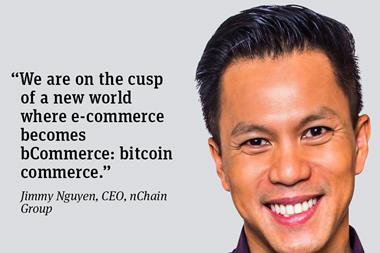

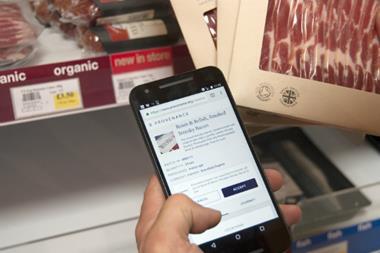
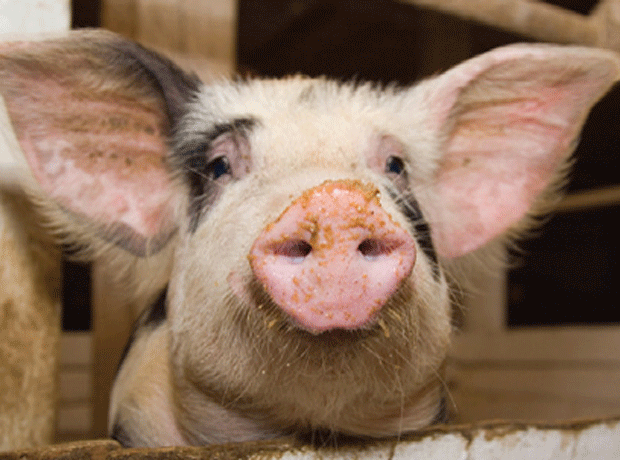
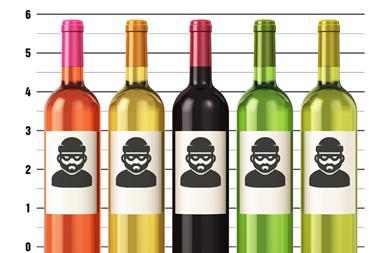





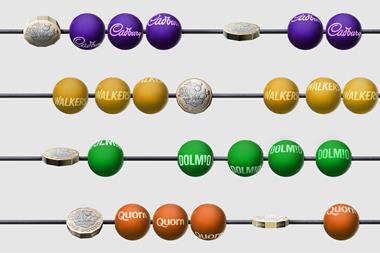
No comments yet